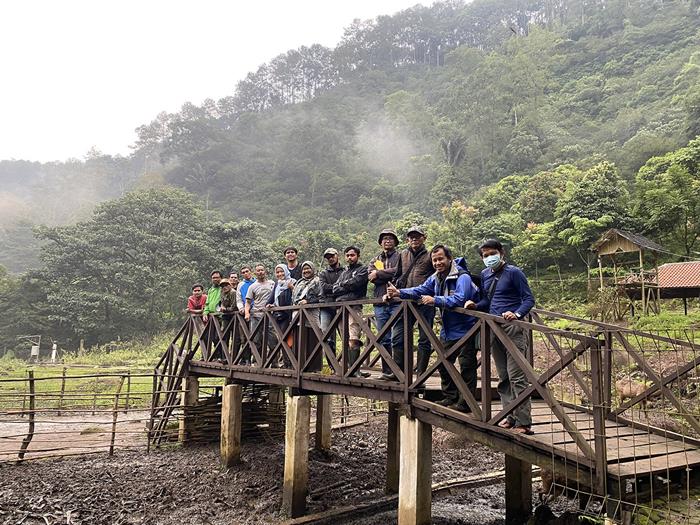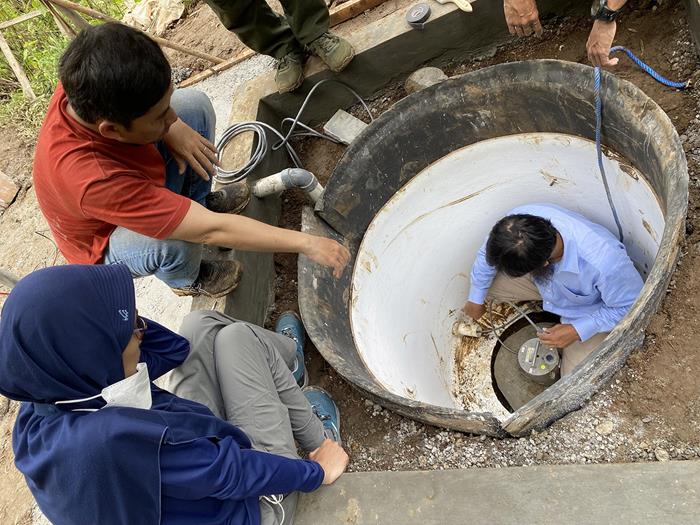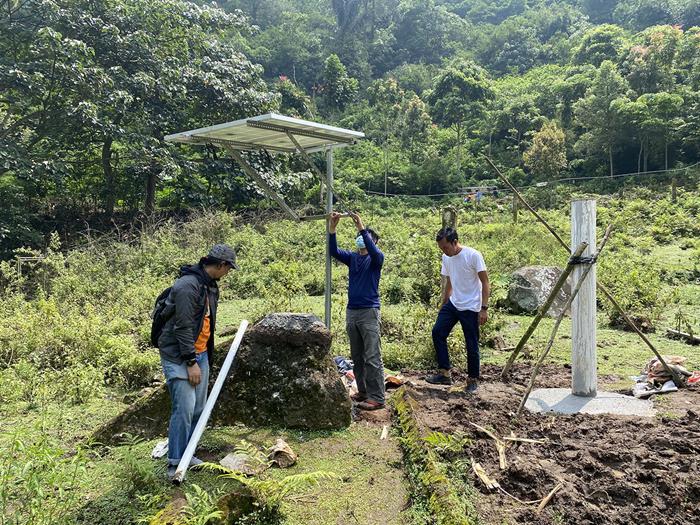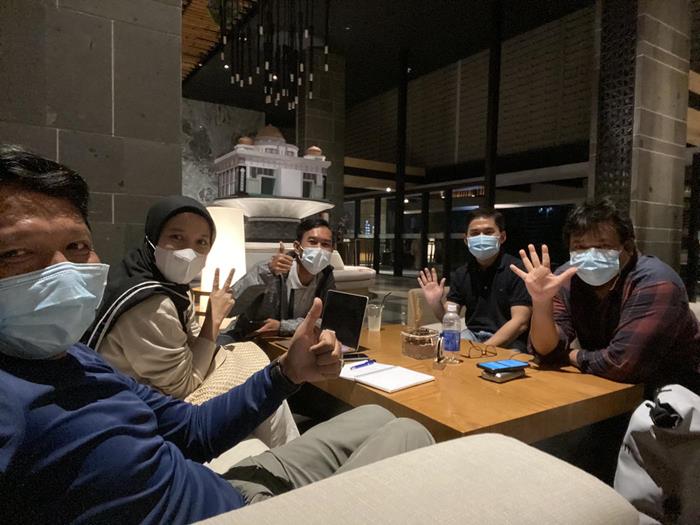In this blog series, we follow scientists from the Centre for Geohazard Observations (CGO) at the Earth Observatory of Singapore as they resume fieldwork activity after a hiatus due to the pandemic. During this first trip, they aim to maintain several Global Positioning System (GPS) stations of the Sumatran GPS Array (SuGAr) offshore Sumatra, and to install new stations. These stations observe the motion of plate tectonics along the Sunda megathrust, the plate boundary fault between the Indo-Australian plate and the Eurasian plate that has generated many great earthquakes. The CGO team ensures that the stations continue to observe the region’s tectonic activity, which ultimately helps prepare for the next earthquake.
Servicing observation stations in Sipora and North Pagai islands, both located in the Mentawai islands, was only part of the CGO’s mission. The team also planned to install more GPS and seismic stations to get a more complete picture of the region’s tectonic activity.
Their next stop was in Bandung, on West Java in Indonesia, where new challenges awaited. The mission there was to jointly set up the stations with our collaborators at Pusat Riset Kebencanaan Geologi of BRIN (Research Center for Geological Hazards of National Agency for Research and Innovation). The stations will help scientists monitor the Lembang fault, which has the potential to generate earthquakes that can affect the nearby city of Bandung and its surrounding areas.
Building new GPS and seismic stations is no mean feat. It takes a careful selection of the site, one that is stable enough and for which we have long-term permission to install a station. We also want to pick a site where we expect limited vandalism, and where there is telecommunication network coverage. For this, working closely and engaging with local communities about the importance of the stations helps a lot. After much deliberation, the newest station would be installed in a deer sanctuary in a place called Tahura, a small village about 8 kilometres (km) from the city of Bandung.

The CGO team and their collaborators from Pusat Riset Kebencanaan Geologi of BRIN in a deer sanctuary close to Tahura village, where they installed a new observation station (Source: Juniator Tulius/Earth Observatory of Singapore)
Seismic sensors are very sensitive and can record a range of ground movements such as those due to traffic, thunderstorms, and tectonic activity. To only record tectonic activity, which EOS scientists and their collaborators are interested in, the sensors need to be isolated as much as possible from the other potential sources of movement. The seismic sensor was therefore placed in a deep vault inside a water tank, and the vault was then sealed with a concrete slab. This setup keeps the temperature around the sensor relatively constant and protects it from getting wet.

Dr Dannie Hidayat (in red), the CGO scientist leading the seismic installations, supervising the setup of the seismic sensor in the vault (Source: Juniator Tulius/Earth Observatory of Singapore)
The new stations have both a GPS station and a seismic station, which allows scientists to process both datasets in an integrated way to get more accurate and reliable ground displacement due to the Lembang fault.
To continuously record any change in the position of the station, the antenna of the GPS station needs to be firmly anchored in the ground. This also ensures that the setup can withstand windy conditions and other elements that would reduce the quality of the data. The team built a concrete structure and placed the antenna on top.
Solar panels and batteries were next to be installed to provide continuous power to the observation station. This was followed by the rest of the installation including the data logger to store the data.
It was then time for testing the station. After the team successfully sent some test data to the main server of the BRIN team in their Bandung office, they were confident that future data would reach the office in near real-time.

Dr Iwan Hermawan (in white), the CGO scientist leading the GPS installations, inspecting the quality of the GPS structure (Source: Juniator Tulius/Earth Observatory of Singapore)
The team and its collaborators had initially planned to install just two stations to observe the movements of the Lembang fault, but they managed to install an additional station — a result of strong teamwork and enthusiasm. The other stations were installed at West Bandung Government Office of our collaborators from BRIN and in Cipada, a small village northwest of Bandung, following the prototype in Tahura.
The CGO team, our most experienced field team with over a decade of experience in installing and maintaining a range observations stations in the region, led the way. Once again, they demonstrated their adaptability to local conditions, critical skills to solve problems, and professionalism to work closely with the collaborators as well as to engage the local officials and community for the purpose of maintaining and installing the observation stations. During their 16 days in the field, the team and their collaborators serviced nine observation stations and installed three new GPS and seismic stations that will help EOS scientists and their collaborators understand how the ground deforms and shakes due to regional tectonic activity.

The CGO team planning future activities with a collaborator (from left to right): Dr Juniator Tulius (CGO), Dr Nuraini Rahma Hanifa (BRIN), Dr Iwan Hermawan (CGO), Dr Dannie Hidayat (CGO), Mr Nurdin Elon Dahlan (CGO) (Source: Juniator Tulius/Earth Observatory of Singapore)
As international fieldwork resumes, we look forward to the CGO’s future fieldtrips. Until next time!
This work related to the installation of new stations is done in collaboration with Pusat Riset Kebencanaan Geology at the National Research and Innovation Agency (BRIN) in Indonesia.